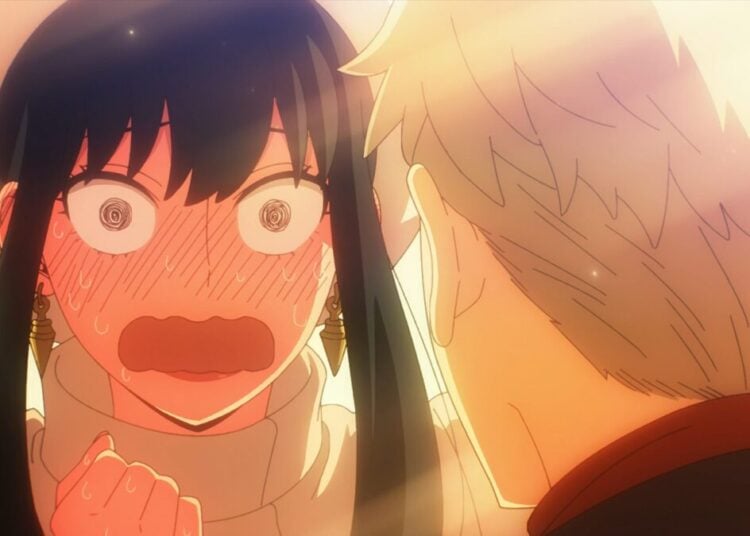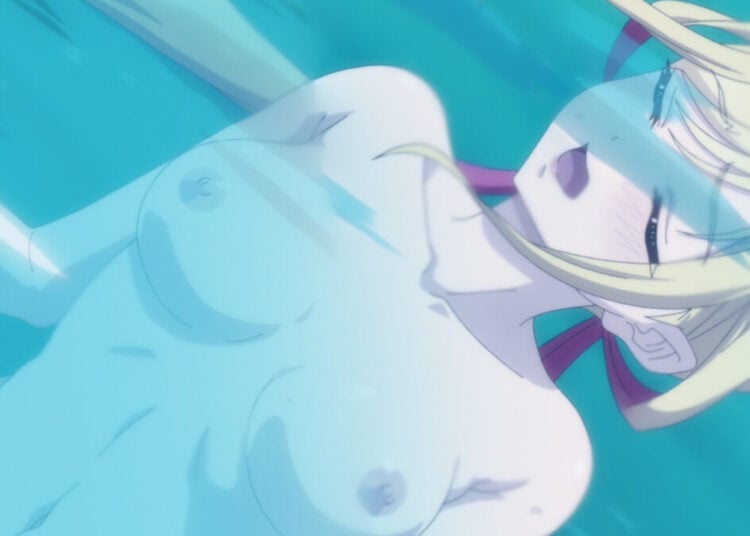Long-time otaku and fans of classic manga may recognize the name Duke Togo, also known as the legendary Golgo 13.
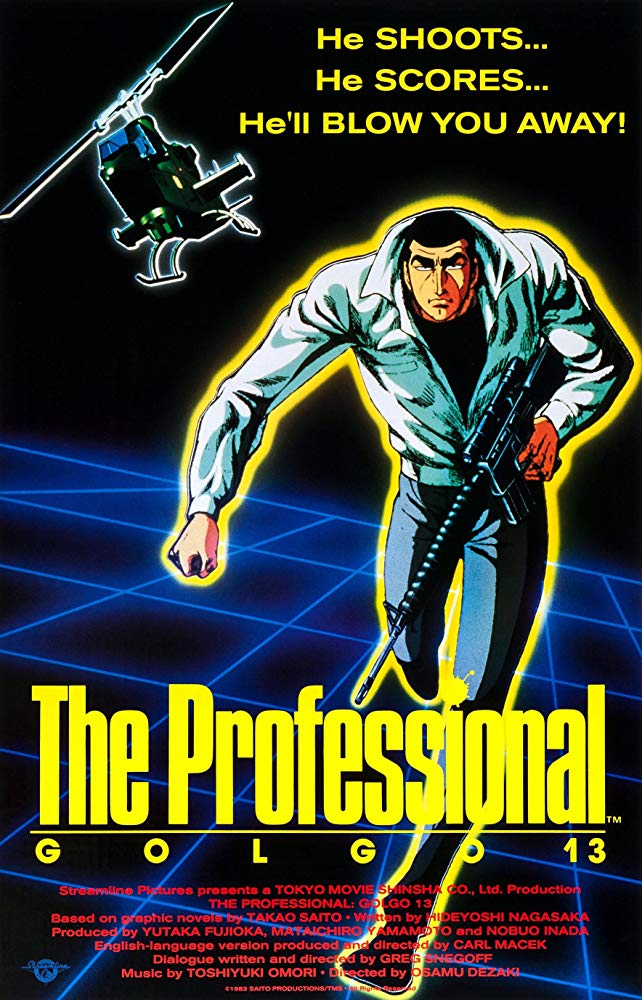
Created by Takao Saito and first appearing in 1968, Duke is the star of the oldest Seinen manga still in publication (reaching close to 200 volumes) as of this piece. Whether it’s taking down tricky foes with his trademark customized M-16, getting into the pants of just about every attractive female on the planet, or his infamously unflinching glare doing either, his exploits over the years are legion. It’s not for nothing that he’s akin to Japan’s James Bond, or alternatively, Agent 47 before that video game character even existed. That the mangaka himself previously worked on serialized adaptations of Ian Fleming’s novels and was explicitly inspired by 007 certainly add credence to such comparisons. It should come as no surprise then that the hitman’s first OVA outing, Golgo 13: The Professional (1983), manages to deliver all of that, and then some.
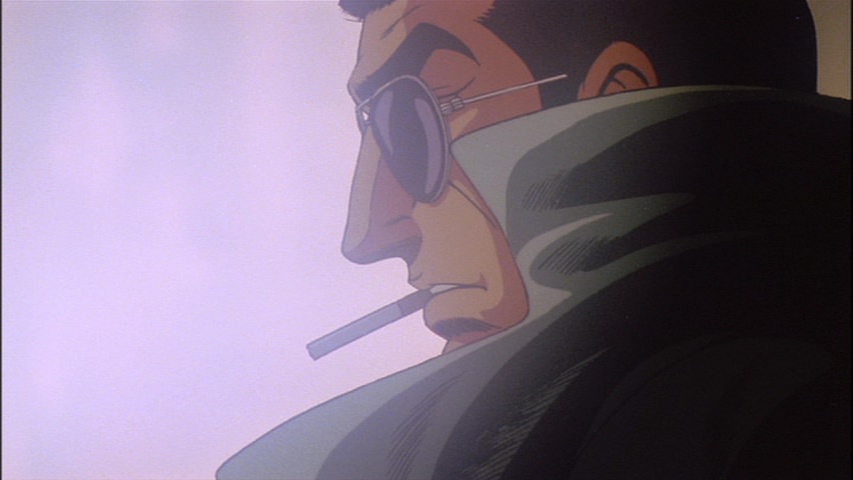
Directed by the late Osamu Desaki (1943-2011) and produced by Tokyo Movie Shinsha (now TMS Entertainment), it’s not actually the first adaptation of the series. That honor goes to the live-action Golgo 13 (1973), as well as its sequel Golgo 13: Assignment Kowloon (1977). The anime film, however, would leave a more lasting impact that resonates well into the present.
It’s Never Easy
The Professional’s story begins with a successful hit on Robert Dawson, the son of powerful business magnate Leonard Dawson and heir to the family business. Just another day in the office for the legendary hitman, or so it seems. Later on, in the middle of another contract to assassinate a Mafia don in Sicily, he’s attacked by American soldiers, while one of his contacts is killed by a genetically enhanced mercenary named Snake. It’s revealed that Leonard, grief-stricken and increasingly consumed by revenge, has devoted all of his contacts and resources to taking down Golgo 13. What ensues is a tense romp as Golgo 13 is pursued by assassins, the FBI, and even the CIA, even managing to kill a Nazi war criminal while at it. All this culminates in a bloody one-man assault on Dawson Enterprises in New York City, where the brutal truth is laid bare.
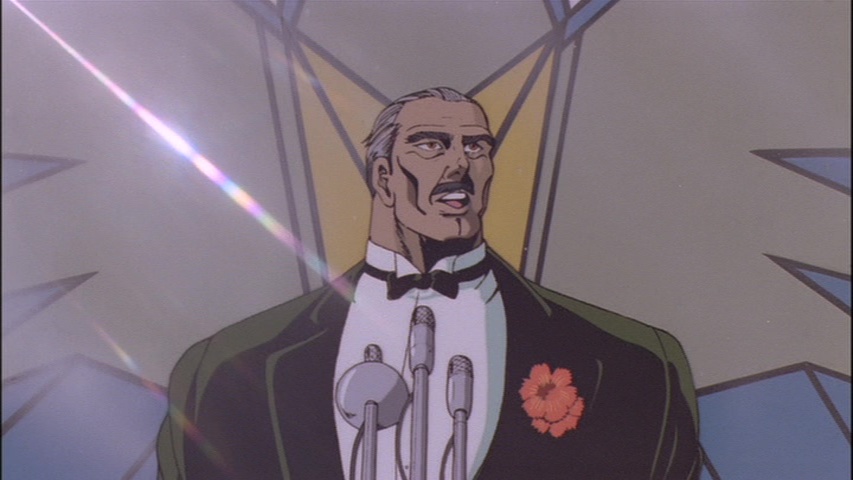
Mirroring the source material, the film is presented as a self-contained chapter in Golgo 13’s long career. As such, it doesn’t require you to have read the manga to understand the premise. That there’s exposition spread throughout, be it in bits of dialogue or on-screen text, certainly helps in easing you in. At the same time, however, the OVA doesn’t waste time showing why people pay for Duke Togo’s services. His combat skills and nigh supernatural marksmanship are on full display in several scenes, such as when he shoots the aforementioned Nazi war criminal despite having a whole building blocking his path. More than a preference for crisp suits, his state of constant readiness and stoic composure even under fire similarly do a good job highlighting his professionalism. While these make him less human and more of a humanoid force of nature, he has nonetheless shown that beneath his cold façade, he doesn’t enjoy killing (of which he does a lot of) and abides by a moral code. Although this does leave him somewhat flat as a character, it’s little consolation for anyone who crosses him.
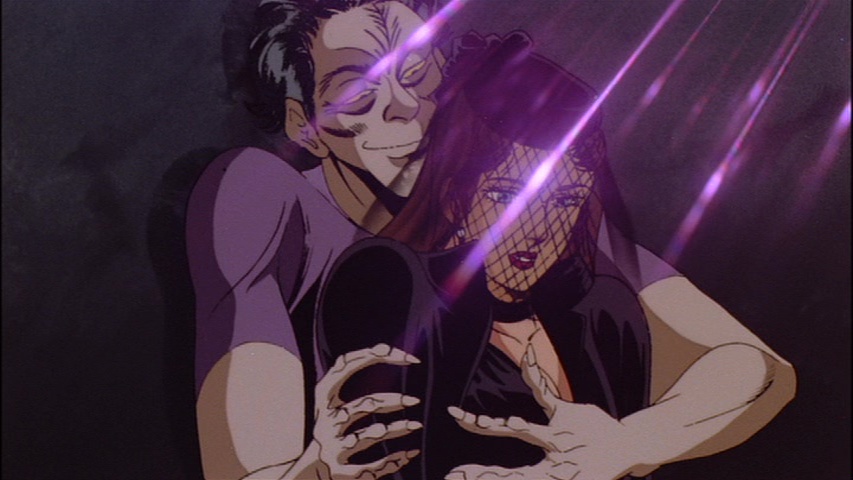
Also lifted from the manga is the peculiar blend of brutality, hyper-realism, and explicit content. Make no mistake: if Golgo 13’s the Japanese Bond, he has more in common with Timothy Dalton and Daniel Craig’s portrayals than Roger Moore’s. Even with some of the more over-the-top elements, such as the elite mercenaries Leonard hires, there’s a consistent level of grittiness that’s grounded in one way or another. Blood and gore are shown in graphic detail alongside the rest of the carnage; even Duke himself gets shot and bruised up amidst the action, showing how he’s still human. Then, you’re treated not only to the infamous sexual exploits of the man himself (complete with his trademark stoicism), but also far less titillating scenes like Snake raping Robert’s widowed wife as “payment” in exchange for accepting Leonard’s offer. You’re thus treated to a murky, cruel world, where many seem knee-deep in corruption, and the line between good and evil is barely made clear.
This is driven home by how the other characters are built up, even though most of them either wind up in a bad situation or dead. The hitmen Gold and Silver, for instance, have their own backstory as murderous twins who survived being dropped in the African jungle to kill guerillas as part of a CIA experiment, which you get to see on-screen. Leonard Dawson, meanwhile, shows genuine grief and desire for avenging Robert’s death. Yet as the story progresses, and his obsession grows, his true colors as a ruthless corporate kingpin come out, to the point of using his own son’s daughter as a pawn against Golgo 13. And that’s on top of his way of “paying” Snake with the widow. Eventually, you start wondering if they really deserve what’s coming for them, or much worse.
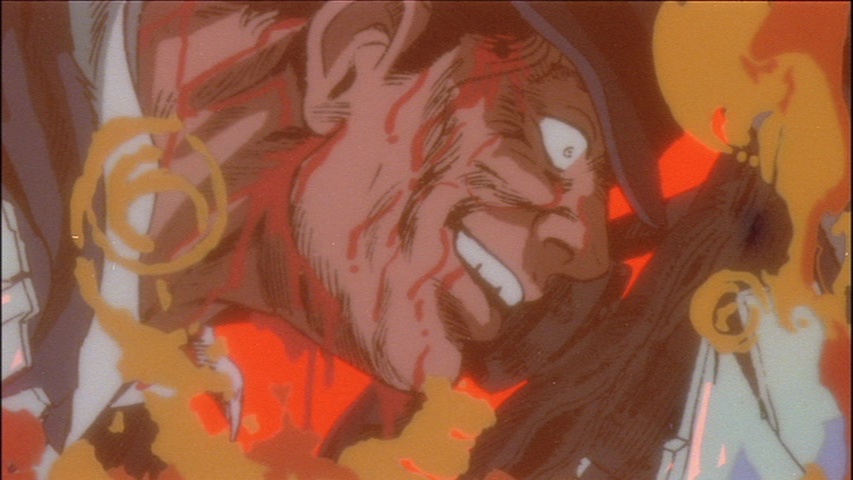
It’s no wonder, then, why someone like Duke Togo comes across as the closest thing to a “hero” amidst it all. That being said, there’s more to the film than this.
The Professional’s Professional
Staying true to Takao Saito’s realistic art style, there’s a considerable amount of detail present in The Professional. You could make out, for instance, the various intricate parts of Golgo 13’s M-16 and the specific models of the firearms wielded by his enemies, such as the Colt MKIV used by the corrupt Lt. Bob Bragan. These extend to everything else, from wrinkles on skin, to the surrounding scenery, and even the cars used, with the protagonist at one point driving a customized Ford Lazer Turbo. The use of accurate English and familiar brands also help in keeping the suspension of disbelief. It’s very obvious, then, that the animators did their legwork in getting the imagery right.
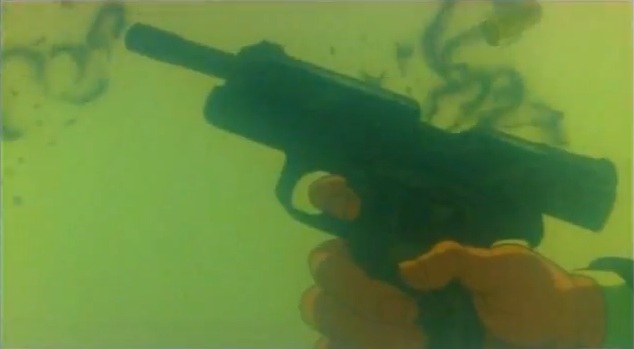
The audio is similarly on point, however dissonant it might seem at first. Much of the soundtrack is comprised of jazz tracks and guitar riffs that manage to hold up well, evoking both film noir and James Bond films from the era. While you might consider such music peculiar given all the bloodshed on display, they manage to blend eerily well with the crisp sounds of explosions and gunfire. Coupled with solid voice acting for both the English and Japanese dubs, and the result is remarkably harmonious, adding a stylish flair to an otherwise gritty setting.
https://www.youtube.com/watch?v=-gcyZc3bhyM
A snippet of the helicopter attack sequence from the film’s climax, showing one of the first CGI scenes in an animated film ever made. Circa 1983.
The Professional is also known for incorporating CGI, due in part to Osamu Desaki being a fan of the nascent technology. Made by Koichi Omura and Satomi Mikuriya, it notably predates the work of Lucasfilm Graphics Group (now known as Pixar) by about a year, effectively making the movie the first animated production to feature computer-generated imagery, ever. As the technology was at its infancy in the early 1980s, however, it hasn’t held up as well as the rest of the anime. This is especially evident in the setpiece CG sequence, in which helicopters are sent to gun down Golgo 13 during his assault on Dawson Enterprises, looking like a game cutscene from an MS-DOS title. As dated if not jarring as the quality may seem to modern eyes, however, they don’t distract from how innovative and ambitious this was for its time. It helps as well that the CGI in the opening credits manages to blend better with the Bond-esque motifs.
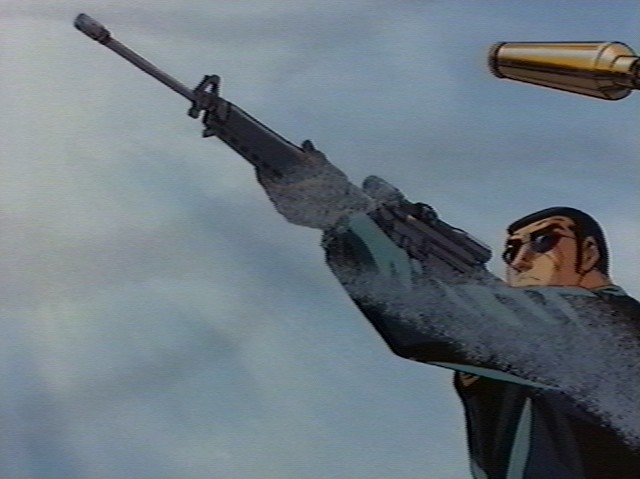
Then, there’s the action itself. According to British commentator Helen McCarthy, the movie was inspired by various Western action films, and it shows. While there aren’t any explicit shout-outs, apart from Leonard being based on British-American game show host Richard Dawson, it’s not hard to see the myriad influences in the various scenarios Golgo 13 finds himself in. The car chase through San Francisco, for example, wouldn’t be out of place in Dirty Harry, while the murkier sleaze calls to mind some of the Cannon Group’s portfolio from that era, such as the infamous Death Wish sequels. Which isn’t to ignore how crisp the animation itself can be. Whether it’s simply driving from point A to B, or empty bullet casings being ejected from an M-16, it’s pretty clear how much effort the creators put into making the whole package worth it for the visuals alone, as though making up for its other shortcomings.
A Lasting Legacy
Golgo 13: The Professional may not be most thought-provoking classic anime out there, nor is it to everyone’s liking. It could even be argued that the sleazier material in the film may meet objections if not allegations of sexism from some critics if it were to come out nowadays. But its legacy can be felt long after its release.
Beyond helping cement Duke Togo’s presence across other media, including the OVA Golgo 13: Queen Bee (1998), various video games and a proper TV anime adaptation in 2008-09, its impact extends past the series itself. Western directors over the years have taken inspiration from the film, with Quentin Tarantino making an outright homage to it in the animated scenes of Kill Bill Vol. 1 (2003). The legendary hitman has also been referenced by myriad manga and anime, whether through parodies or cameo appearance, comparable to the likes of JoJo’s Bizarre Adventure and the Gundam franchise. Not to mention how the movie’s innovative use of CGI would foreshadow the increasing presence of it in Japanese works by the 1990s. As well as the various clips of it finding new life as sleek fodder for vaporwave and synthwave videos in more recent times.
A fan-made music video for Ocean Drive’s “Miami Nights 1984”, containing footage from the film. Circa 2012.
Consider it a job well done for Golgo 13.


